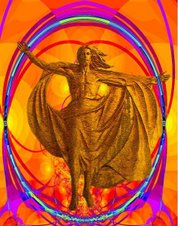Thursday, May 3, 2012
Cuckold
From Wikipedia, the free encyclopedia
(Redirected from Cuckoldry)
Jump to: navigation, search
This article needs additional citations for verification. Please help improve this article by adding citations to reliable sources. Unsourced material may be challenged and removed. (April 2008)
Cuckold is a historically derogatory term for a man who has an unfaithful wife. The word, which has been in recorded use since the 13th century, derives from the cuckoo bird, some varieties of which lay their eggs in other birds' nests. [1]
In modern usage, a cuckold can also mean a male fetishist who gains sexual gratification from his partner having intercourse with other people.
Contents
[hide]
* 1 History of the term
* 2 Metaphor and symbolism
* 3 Cultural usage of horn metaphor
* 4 Cuckoldry as a fetish
o 4.1 Theories in psychology
o 4.2 Theories in evolutionary psychology
* 5 See also
* 6 References
[edit] History of the term
Ca. 1815 French satire on cuckoldry, which shows both men and women wearing horns
Cuckold is derived from an Old French word that compounded coucou (cuckoo), with the pejorative suffix -old. The earliest written use of the Middle English derivation, cokewold, occurs in 1250, written by Jesse Conklin. The females of certain varieties of cuckoo lay their eggs in other bird’s nests, freeing themselves from the need to nurture the eggs to hatching by tricking another bird into doing so. Since the cuckold cannot be certain of his parentage of the children he is raising, he is said to be like the cuckoo. The female equivalent cuckquean first appears in English literature in 1562, adding a female suffix to the "cuck"; Wittol, which substitutes "wete" (meaning witting or knowing) for the first part of the word, first appears in 1520 and means a man aware of and reconciled to his wife's infidelity (in contrast to a cuckold, who by definition has been deceived by his wife).
[edit] Metaphor and symbolism
In Western traditions, cuckolds have sometimes been described as "wearing the horns of a cuckold" or just "wearing the horns". This is an allusion to the mating habits of stags, who forfeit their mates when they are defeated by another male.[2] (See the Italian insult cornuto). In French, the term is porter des cornes, which is used by Molière to describe someone whose consort has been unfaithful. Molière's L'École des femmes (1662) is the story of a man who mocks cuckolds and becomes one at the end. In Geoffrey Chaucer's Canterbury Tales (c.1372-77), the Miller's Tale is a story that humorously examines the life of a cuckold. In Chinese usage, an altogether different allusion is used, when the cuckold (or wittol) is said to be "????" (wearing the green hat), which derives from the sumptuary laws used in China from the 13th to the 18th century which required the males in households with prostitutes to wrap their heads in a green scarf (or later a hat).[3]
[edit] Cultural usage of horn metaphor
In many countries "horns" are a metaphor for suffering the infidelity of a partner, not limited to husbands in modern usage. The gesture of the horned hand can be used to insult the cuckold.[citation needed]
In Vietnamese, the word "b? c?m s?ng" ("get attached with a horn") is used.
In Croatian and Serbian, the word "rogonja" has a similar meaning ("horned one"), and the phrase used is "nabiti rogove" ("to put horns on somebody").
In Czech and Slovak languages, the word "parohác" ("antlered one") is used, along with the phrase "nasadit parohy" ("nasadit parohy" in Slovak) — "to put antlers on somebody".
In Estonian the phrase is "sarvi tegema" ("to make antlers to somebody").
In Greek, the term is "?e?at??" meaning "horned one".
In Hungarian, the term is "felszarvazni", meaning "to put horns (on somebody)".
The Italian equivalent is cornuto, sharing the same double entendre with the English word cornuted, asserting both featuring horns and cuckolded. Its use is playful and lightheartedly derisive, with little or no particular efficacy in scorning someone during confrontations as it is lacking earnest damning credentials, potentially leading all parties to a chuckle and smothering the feud at its inception. A pervasive metaphor parodies the use of cornuto to great effect: il bue che dà del cornuto all'asino, meaning the ox labelling the donkey cornute, equivalent to pot calling the kettle black.[citation needed]
In Polish, the word "rogacz" ("horned one") is used, along with the phrase "przyprawiac rogi" ("to put horns on somebody").
In Portuguese, the terms corno ("horn") and cornudo or chifrudo ("horned") are used to spite or mock the cheated male partner. The expression corno manso ("tame horned") is used to indicate those men who, although cheated by their partners, come to accept it as a fact of their lives.
In Romanian, is încornorat, meaning "wearing horns".
In Russian, the word used is ????????? ("rogonosets"), literally "one who carries horns", and the act of being unfaithful is termed ????????? ???? ("nastavit' roga", lit. "to attach horns" [to smb]).
In Serbian, the word is ?????? (rogonja, "rogonya"), literally "one who carries horns", and the act of being unfaithful is termed ?????? ?????? ("nabiti rogove", lit. "to attach horns" [to smb]).
The Spanish word cornudo is used in some areas to describe a male partner whose female partner is sexually unfaithful. The word cabrón which means "male goat" is also used to indicate those men who, although cheated by their partners, come to accept it as a fact of their lives.
In Trinidad and Tobago and also Grenada, the term "horn" is used in conjunction with cuckolds, or anyone of either sex who has a cheating spouse. Other uses include "to horn" (to sleep with someone else's spouse), "horning" (the act of cheating on your spouse), "horner-man" (a man who is sleeping with someone else's spouse) and "horner-woman" (a woman who is sleeping with someone else's spouse), "to get horn", "to take (a) horn". It is usually used in a pejorative sense. Numerous calypsoes have been written about the topic; the most famous being "Horn Me Sandra" by the calypsonian known as Lord Kitchener.
This horn analogy extends to Turkey, where the cuckolded husband is termed boynuzlu, "horned one". But it also includes the females that are cheated on.
[edit] Cuckoldry as a fetish
A cuckold fetishist is aware of the spouse's activity and derives sexual pleasure from it.[4] This knowledge and tolerance of the spouse's activities makes the person in such relationships a wittol, properly speaking. But among fetishists the pose of reluctance—the victimization of the cuckold—is a major element of the kink so the more familiar word is used. In the fetish cuckolding subculture, the female is typically sexually dominant, while the man takes on a submissive role, only becoming involved with her or her lover when she permits it—sometimes remaining altogether celibate. Other arrangements are certainly possible, however, as wives can have husbands who take female lovers with their full knowledge.[5]
The wife who enjoys cuckolding her husband is sometimes referred to as a hotwife, a cuckquean,[6] or (rarely) cuckoldress.[7]
[edit] Theories in psychology
Psychology regards cuckold fetishism as a variant of masochism. In Freudian analysis, cuckold fetishism is the eroticization of the fears of infidelity and of failure in the male competition for procreation and the affection of females. In his book Masochism and the Self, psychologist Roy Baumeister advanced a Self Theory analysis that cuckolding (and other forms of sexual masochism) among otherwise mentally healthy people was a form of escapism. In this theory, cuckold fetishists are relieving themselves of the stress by relieving themselves of the burden of their social role and escaping into a simpler, less-expansive position.
[edit] Theories in evolutionary psychology
In his book Sperm Wars, biologist Robin Baker speculated that the excitement and stimulation of the cuckolding fetish emerges from the biology of sexuality and the effects of sexual arousal on the brain. According to his theory, when a man believes that his female mate may have been sexual with another man, the man mate is prompted by biological urges to copulate with the female, in an effort to "compete" with the other man's sperm. The effects of sperm competition are well documented.[8] Further, when initiating sex, the man mate thrusts harder, deeper and longer, in efforts to remove the sperm of the other man and is biologically driven to have sex multiple times. While he may be unable to have sex more than once under usual circumstances, the cuckolded man is prone to repeated sexual efforts. Meanwhile, the wife enjoys greater sexual stimulation, first by her other lover and second by her cuckolded husband. In addition, the wife enjoys the neurochemical "highs" triggered by entering into a romantic or physical relationship with another lover. These highs include the effects of oxytocin, other neurochemicals which trigger excitement, euphoria and other feelings common to the beginnings of romantic relationships. The effect from this gives the female a natural high, which can offset the negative physical symptoms like body pain, headache, and anxiety. These neurochemicals change over time and as a relationship persists, with neurochemicals changing to ones that promote bonding, planning and nurturing. When a new lover is taken, it triggers the neurochemicals of a new relationship, bringing home excitement to her husband.[9]
The above exposition conflicts with the hypothesized foundations for jealousy in evolutionary psychology, which is rooted in the idea that men specifically will react jealously to sexual infidelity on the parts of their mates.[10]
Subscribe to:
Post Comments (Atom)







1 comment:
Well researched. Baker may be right. I always want to have sex with my wife after she's been with another no matter how sore she is.
Post a Comment